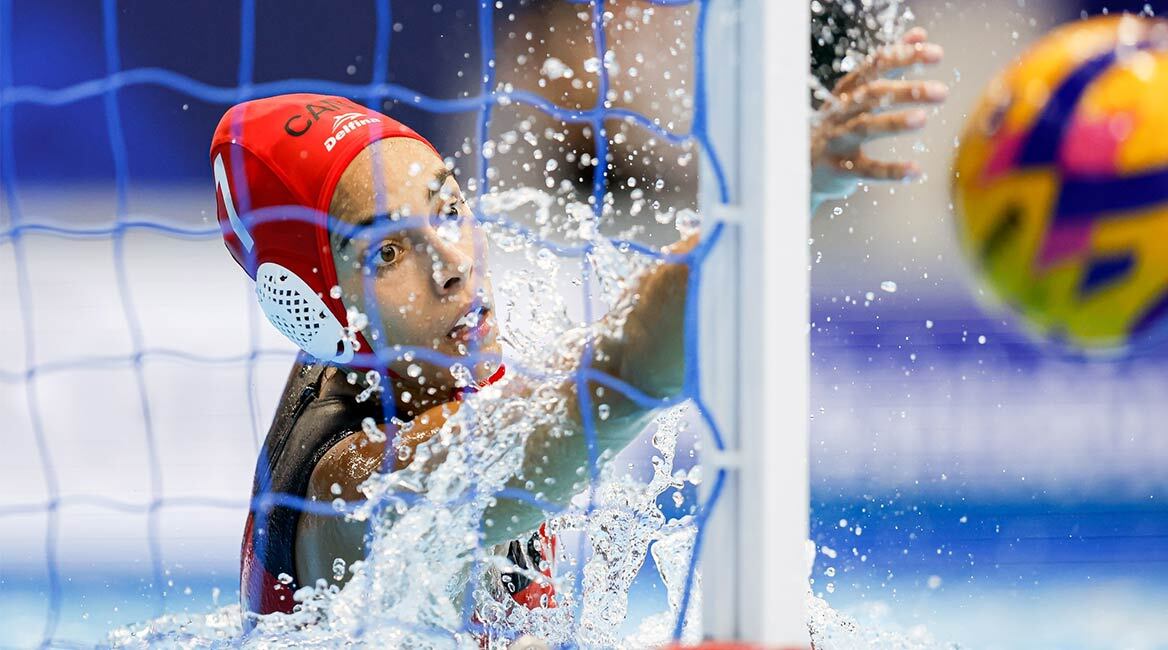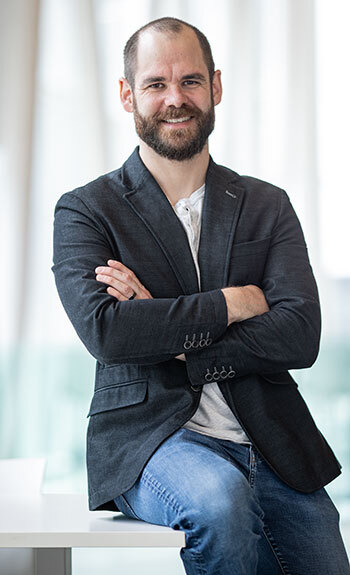Analyzing Motion in 3D

@ Institut national du sport du Québec. Copyright.
He could have tried to become a surgeon, a top-level athlete or a comic book author, but chance and curiosity attracted Julien Clément, now a professor in the Systems Engineering Department, to engineering studies instead. How does it work? And above all, can we do better? These questions led him to observe the world through an idealized spectrum, where augmented humans would achieve sporting performances that would bare no comparison with what we know today.
Even as a child, Julien enjoyed taking things apart and putting them back together to understand how they worked. While in high school, when came the time to choose a course of study, he opted for the École nationale supérieure de mécanique et des microtechniques de Besançon, now known as Supmicrotech-ENSMM. He had an easy time with his studies, as with sports, but he annoyed his professors with his incessant fidgeting. “Judo helped me channel my energy. Today, I would probably have been diagnosed with attention deficit disorder.”
A New Destiny
In his final undergraduate year, Julien had to do an internship. He wanted to go abroad. He sent e-mails to several professors, but only one replied: Nicola Hagemeister, a professor in the Department of Systems Engineering at ÉTS. Professor Hagemeister changed Julien Clément’s life. She hired the young student for a six-month internship and became his mentor. She followed Julien throughout his master’s and PhD programs. “She was the one to put me in touch with Pascal André Vendittoli at Maisonneuve-Rosemont Hospital for the position of research assistant. She was the one who encouraged me to apply for a teaching position at ÉTS. She’s even the one who married my wife and me.”
From Underdog to Top-Level Athlete
Julien Clément chose to focus his master’s thesis on gait analysis in dogs with hind leg injuries. At the time, surgical techniques to treat cruciate ligament tear were not very effective, and the dogs continued to limp and feel pain. “I designed an experimental set-up that reproduced the movements of canine hind limbs.” A better understanding of the dynamic functioning of the joint would eventually lead to the development of a new ligament reconstruction technique. Julien’s master’s thesis in health technology received the “excellence” award in 2009.
Julien continued his PhD research, this time on the arthritic human knee. To study the joint structure, external markers are positioned to follow bone movements, which causes measurement errors. Julien focused on minimizing these errors by combining two analytic tools: knee kinesiography using the KneeKG system—which evaluates joint movement in 3D—with the EOS 2D X-rays for front and side images of the knee bones. “It’s as if I had developed a method of seeing bones move through the skin.” He earned his PhD in Biomechanical Engineering in 2015, again with honours.

ÉTS Professor Julien Clément
For his postdoc, Julien is moving on to the next level—the shoulders. He wants to offer an alternative to the goniometer, the angle protractor used by therapists and surgeons. “You can’t represent the upper limb mobility in three dimensions just with a little protractor,” he says. The movement must be quantified through clinical testing. Julien designed an upper limb 3D kinematic measurement device that calculates the reach of people suffering from musculoskeletal disorders of the elbow or shoulder. Julien received five postdoctoral awards for this project, and his work led to three scientific papers published in prestigious journals.
For Julien Clément, movement analysis in a laboratory will always represent but a fraction of the reality in field complexity. In 2017, he is hired at the Institut national du sport du Québec as a performance analyst with Olympic-level athletes. He developed a tool capable of automatically measuring the instantaneous speed of para-swimming athletes, the number and distance covered for each arm stroke, and the asymmetry between the right and left sides. These data indicate adjustments to be made to training sessions. “I’d like to be recognized in the sports world for my contribution. It would be my way of promoting the importance of getting out of your seat and away from your screen.”
Teaching for a Better World
Research is Julien Clément’s inspiration, and teaching is his rejuvenation. “To be human means to have a phobia—that when we die, all our accumulated knowledge disappears.” For Julien Clément, teaching ensures the continuity of knowledge. He believes it’s important to train and supervise people so that one day, but not too quickly… they can surpass their masters.
Why do Less when we can do More?
Hyperactive in everything he does, Julien is the father of four children, plays several sports, reads hundreds comic books each year, is a member of a jury selecting the best Québec and foreign comic books, and loves playing video games. Sometimes he wonders if he has too many passions… One thing is for sure, Julien Clément finds happiness in sequential art and movement.



